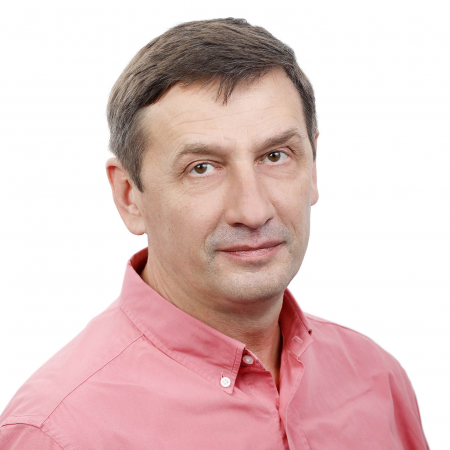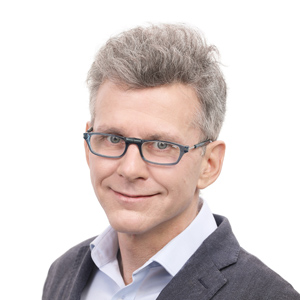Lateral disc hernia. Posterior microdiscectomy
What is lateral intervertebral disc herniation?
Lateral intervertebral disc herniation is the result of degenerative changes in the spine, when the intervertebral cartilage moves beyond its normal location, breaking the structures of the spine (ligaments), taking place in the lateral canal, at the exit of nerve roots, causing severe pain or other neurological symptoms.
This is one of the most common types of intervertebral hernia. This type of pathology requires rapid surgery (microdiscectomy), as conservative treatment does not relieve pain and does not solve the problem. As soon as the patient learns about the real problem, he gives priority to surgical treatment of the lateral herniated disc.
When MRI specialists diagnose minor changes and displacements, it is disc protrusion, when the process is more pronounced - intervertebral disc herniation.
Note that pain is a characteristic sign of compression of sensitive roots in hernias, and in advanced cases, it leads to such terrible changes as paresis, paralysis, or dysfunction of the pelvic organs!
How is a lateral hernia diagnosed?
MRI (magnetic resonance imaging) is used in MM Dobrobut for reliable diagnosis of lateral spinal hernias.
But before conducting such a study, be sure to consult our clinic with a neurologist or neurosurgeon. Our specialists will determine which part of the spine you need to examine, which will save you on research.
What is a posterior microdiscectomy?
Posterior microdiscectomy is minimally invasive microsurgery that removes part of the spinal hernia (part of the pulpal nucleus) that protrudes into the part of the cartilaginous ring that presses on the nerve roots, causing pain or other neurological symptoms.
Microsurgical discectomy is today the "gold standard" worldwide in the surgical treatment of intervertebral hernias.
When is a posterior microdiscectomy indicated?
The reason for the operation is the pinching of nerve roots, in the case of pain, when the pain can not be stopped or other neurological symptoms are already developing.
In each case, our specialists individually decide on surgical treatment taking into account the neurological symptoms, the general condition of the patient, and the data of magnetic resonance imaging!
How is the preparation for the operation?
Before surgery, in MS "Dobrobut" you must undergo a routine comprehensive examination. This will identify contraindications to surgery, minimize complications.
How is a microdiscectomy performed at MM Dobrobut in Kyiv?
The operation is performed under general anesthesia.
Several small skin incisions are made over the spine. To access the lateral canal, part of the yellow ligament is removed, freeing the exit of the nerve roots. Using a special microscope, the hernia is removed (removal of the pulpal nucleus or part of it), as a result of which the nerve roots are released from compression. The intervertebral disc is in most cases treated to improve recovery and reduce the risk of laser recurrence.
Then layer-by-layer sutures are applied to the wound and aseptic dressings.
Within 1-5 days the patient is discharged from the clinic, the length of stay is affected by the complexity of the case. For the first 1-2 weeks you can not sit for long and need to refrain from strenuous exercise. After 3-6 weeks, you can perform physical activity.
How is endoscopic microdiscectomy performed at MM Dobrobut in Kyiv?
The operation is performed under general anesthesia.
Miniature incisions (punctures) up to 4 mm are made in the area of the spine, through which a special endoscope is inserted, with the help of which visualization is displayed on the monitor screen. With the help of special tools, under visual control, remove the hernial protrusion (part or all of the pulpal nucleus), the disk is preserved. Such access and surgery are less traumatic, so the risk of complications and hospital stay is minimal. Be sure to treat the intervertebral disc with a laser, which improves regeneration and reduces the risk of recurrence.
Then layer-by-layer sutures are applied to the wound and aseptic dressings.
The price of the operation depends on the volume of surgery and the complexity of the operation. A specialist will tell you more about the cost of microdiscectomy at your appointment.
After the operation, the patient can be discharged the next day from the clinic. In the first 2 weeks, you can not perform a heavy exercise and sit a lot. In 3-4 weeks it will be possible to start performance of more heavy physical exercises and loadings.
How can you contact us?
Contact our specialists for help at MM Dobrobut in Kyiv if you have a problem with back pain. The earlier the disease is diagnosed and the decision to have surgery is made, the less traumatic and more successful the surgery will be.
You can make an appointment for a consultation with our specialists by leaving an application on our website or by calling the call center.
We will call you back and you will be able to get the most up-to-date information from MM Dobrobut in Kyiv about the operation and the cost of the operation.
Bibliography
- Антипко Л.Э. .: Стеноз позвоночного канала – Воронеж, ИПФ «Воронеж», 2001, 272 с.
- Бубновский С. М. Грыжа позвоночника — не приговор! — М.: Эксмо, 2010.
- Бродская З.Л. Особенности грыж шейных межпозвонковых дисков (по данным рентгенологического исследования). // Тез. докл. обл. научн. конф. "Шейный остеохондроз". - Новокузнецк, 1984 - С. 39-48.
- Цивьян Я.Л., Бурухин А.А.: Патология регенерирующего межпозвонкового диска. Новосибирск: Наука. Сиб. отд-ние, 1988.
- Клинические рекомендации «Хирургическое лечение грыж межпозвонковых дисков Шейного отдела позвоночника». – Москва, 2015, 20 с.


